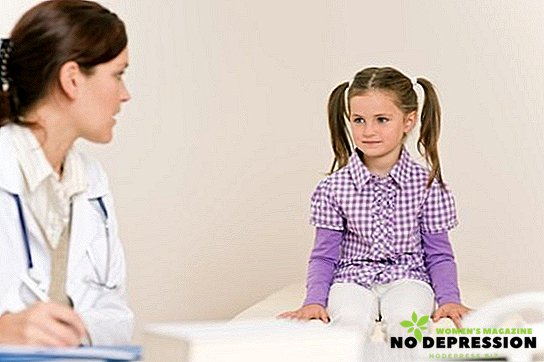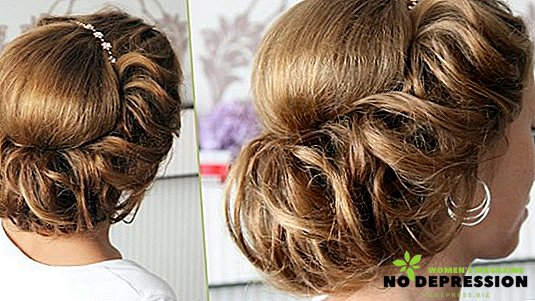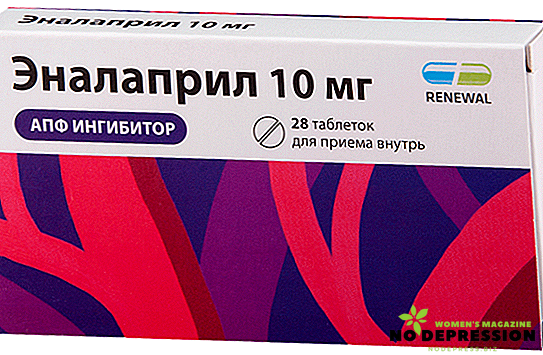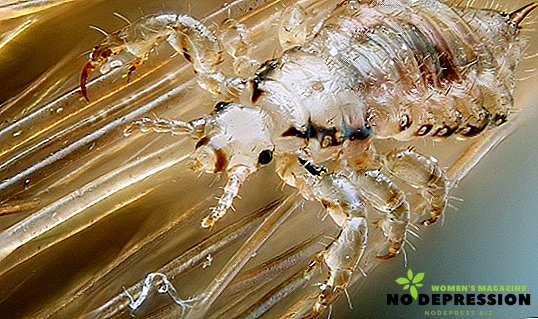Giardia are parasites localized in the small intestine and causing a disease such as giardiasis. Often this disease is difficult to detect by external signs, as it may take a latent form.
However, the danger of it is that children aged 3 months to 3-4 years are more susceptible to this disease than adults. Contaminated water and food are the main causes of infection in children.

It is very important to diagnose the disease in time, as there is a risk of undesirable complications for the fragile children's organism.
Varieties of infectious pathogens and the possibility of infection
In order to identify the disease in a timely manner, one should know its etiology. Causative agents of infection, Giardia, are of two types.
- Vegetative, or mobile form. Pear-shaped motile bacteria are capable of sticking and detaching from the membrane of the small intestine, thereby damaging its healthy cells. By destroying beneficial lactobacilli, Giardia is able to excrete excretion toxic environment in the intestines and reduce the absorbability of trace elements. However, it was found that vegetative forms instantly die outside the human body.
- Cysts, or fixed form. When an infectious pathogen enters the small intestine into the large intestine, it becomes immobile. Under adverse conditions, the active bacterium turns into a latent cyst, which is excreted from the body along with feces. Since Giardia in this form retains its internal activity for about a month, the risk of infection is huge. As soon as the cyst enters the body again, it becomes vegetative.
Giardia provoke serious consequences, cause multivitamin and lactase deficiency.
In addition, due to the toxic environment, various allergic reactions occur, and in time, the disease that is not identified can cause chronic intoxication and immune deficiency.
It is necessary to know that cysts penetrate into the body in different ways, among them are the main ones:

- Food infection. Cysts can enter the body with dirty vegetables, meat. Tap water may be contaminated.
- Household contacts. When using common household items, toys, especially in the sandbox on the playground, when shaking hands, as well as in large families, giardiasis spreads very quickly.
- Contacts with animals. Animals are also susceptible to giardiasis, and therefore the spread of cysts with their fecal masses is possible. It is necessary to monitor the behavior of the child on the street. Pediatricians do not advise starting a pet until a child is 5 years old.
It is noted that infection is possible during childbirth, but it rarely happens.
Symptoms of infection in children and the danger to the child's body
Very often giardiasis is masked by other disorders of the body, and it can be falsely identified as another disease. Therefore, you should contact a specialist if the symptoms become pronounced. Among the main features are:
- indigestion, frequent constipation or diarrhea;
- loss of appetite, bitterness in the mouth, or nausea;
- nagging pain in the lower abdomen and near the navel;
- consistently elevated body temperature (37 degrees and above) for more than two weeks;
- fatigue, confusion;
- enlarged lymph nodes, which can be determined even with self-examination;
- intoxication and nervous system disorders, leading to troubled sleep, gnashing of teeth;
- allergic reactions;
- swelling of mucous membranes, possible attacks of severe cough.

All these symptoms can be detected and with colds, dysbacteriosis and other disorders, so it is important to promptly seek help from a specialist. It should be understood that Giardia inflicts irreparable harm to the child’s body, and the consequences of this disease are dangerous.
- Vitamin deficiency occurs as a result of the active absorption of nutrients and minerals from the baby’s blood by Giardia. Sharp weight loss and immunodeficiency are possible.
- The waste products of bacteria create a toxic environment in the body, causing sudden allergic reactions. Often, against the background of giardiasis, dermatitis and bronchitis are diagnosed.
- The acute stage occurs due to the ingestion of an increased number of infected cysts, causing severe allergic reactions, bloating, nausea, vomiting, and increased body temperature. In such cases, you should immediately seek medical attention.
Diagnosis of the disease
Children's giardiasis is often unsuccessfully treated under the guise of other diseases: allergies, dermatitis, dysbiosis. You should carefully consider the problem and pass on the analysis of feces, where most often you can find cysts. In addition, you have to go through a whole range of diagnostic studies:
- blood chemistry;
- serological diagnosis of blood for the detection of antibodies to bacterial antigens;
- highly sensitive polymerase chain reaction of feces;
- coprogram;
- Ultrasound of the abdominal organs.
In some cases, conduct duodenal examination, which involves the collection of bile probe. The contents of the patient's secret is always filled with cysts. However, young children of preschool age do not conduct such a study. Doctors recommend the use of this method from 9-10 years.
Medical treatment and non-traditional methods of combating infection
The treatment of such a specific disease as giardiasis always proceeds very slowly, and it is very difficult to get rid of cysts. Experts do not recommend the use of non-traditional methods of medicine for the treatment of children under 3 years old and older preschool age. So, medical treatment includes the following steps:
- The simultaneous administration of antimicrobial drugs (Metronidazole, Tinidazole) and a group of nitrofurans (McMiror, Furazolidone, Nifuratel). An overdose of drugs causes negative reactions of the body, so only a doctor can prescribe the dosage correctly.
- Antihistamines, and in some cases, laxatives are prescribed by a gastroenterologist for the 3-5th day of taking antimicrobial agents. This is necessary in order to facilitate the elimination of toxins from the body of the child, caused by the death of Giardia during treatment.
- After drug treatment, tests are prescribed. If the disease remains, repeat therapy is prescribed medication.
 Therapy includes not only medication, but also diet and a certain diet. This treatment regimen is also selected by the doctor, focusing on two rules:
Therapy includes not only medication, but also diet and a certain diet. This treatment regimen is also selected by the doctor, focusing on two rules:
- exclude: sweet and flour (including drinks);
- include: “sour” products (dairy products without sugar, beans, nuts, corn, rice, wheat).
The diet prepares the body for medical treatment and contributes to the spontaneous death of parasitic microorganisms.
In addition, non-traditional methods of treatment are widely used, but they can only be used when the child is 10 years old. Among them are the following popular recipes:
- Infusion of herbs celandine. Chopped grass is poured boiling water in a ratio of 1 tbsp. l. / 250 ml, then insist about two hours in a dark place and filter. Ready infusion should be given to the child every day for 1 tbsp. l before each meal. The course of therapy is 5 days, then you need to take a break for a few days and resume treatment for another 1-2 courses.
- Cucumber water. The safest folk remedy is easy to prepare: the seeds of a ripe cucumber fruit (2 pcs.) Are poured with boiling water and left for 2-3 hours. Chilled cucumber water is given to the child throughout the day. This recipe can be used for the prevention of giardiasis.
- During the week pharmacy oil of bergamot is dripped one drop into the liquid consumed by the child. The course of such therapy is not more than 7 days.
- Decoction dandelions. For the preparation of tools will need a pharmaceutical collection of dandelion roots (2 tbsp. L.), Which is poured with water and brought to a boil over low heat. Cook another 15 minutes, filter and cool. This drink is not stored in the refrigerator, and it should be updated every two days. It is necessary to accept 2-3 tsp. before meals, and also in the evening before bedtime no more than ten days.
- Compression oil compresses impose on the liver, but this prescription requires consultation with a doctor.
- Broth birch sap and calendula. Birch sap (1 l) is boiled for 10-15 minutes, adding calendula flowers (15 g). The cooled broth is taken half a glass three times a day for 5 days.
In addition, parasites are very effectively removed from the body of pumpkin seeds, which should be taken on an empty stomach at least a tablespoon once a day. It should be understood that some herbs can cause allergic reactions. Therefore, the use of folk remedies should be on the recommendation of a doctor.
Prevention
By following simple rules, you can prevent the disease or slow its development:
- Clean food and drinking water. It should be washed vegetables, fruits, eggs before eating. Young children need to buy purified baby water, for older children, you can use cleaning filters or boil.
- Personal hygiene, including washing hands and face after a walk. This also includes disinfecting a child’s toys before the age of one and excluding the use of toys in the playground.
- Eliminate contact with street animals. It is also not necessary to start a new pet while the child is small, and the protective functions of his body are not yet fully formed.
- When bathing in open water bodies, it should be explained to the child that water should not be swallowed. It is best to exclude bathing in fresh water for a child under 5 years of age. Cysts do not live in salt water, so do not give up on sea bathing.

In addition to all of the above, it is worth paying attention to the fact that anti-epidemic preventive measures should be taken in all children's institutions to preserve the health of children.
Conclusion
It is important to once again pay attention to the main points in the diagnosis and treatment of the disease:
- Children aged 3 months to 3 years are particularly susceptible to parasites due to unformed protective functions of the body.
- The disease proceeds slowly, often masking itself under other infections, has similar symptoms with allergies, bronchitis, and dysbacteriosis.
- Treatment of the disease should be complex and be carried out under the supervision of a pediatrician.
- Disease prevention is necessary to exclude both primary and re-infection.












